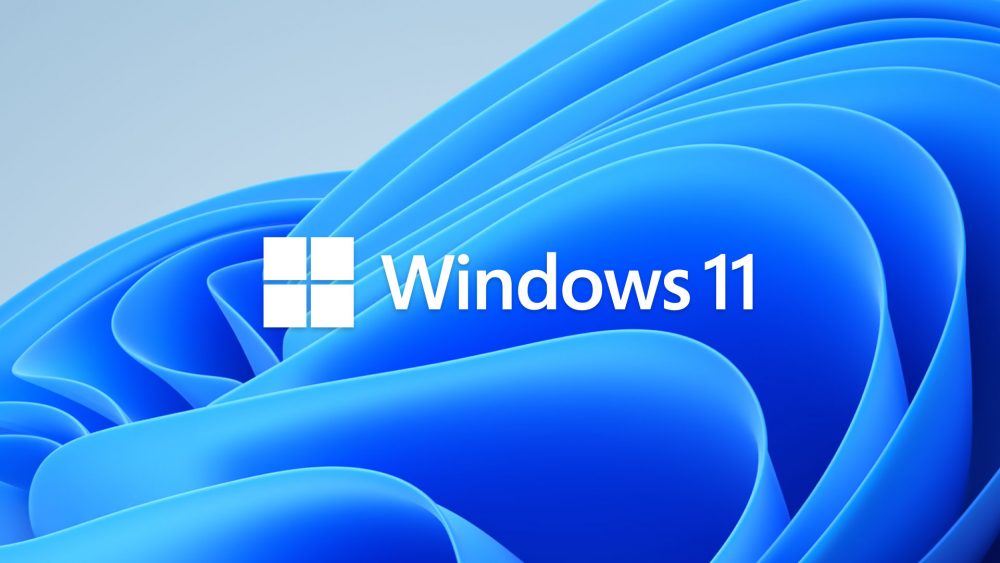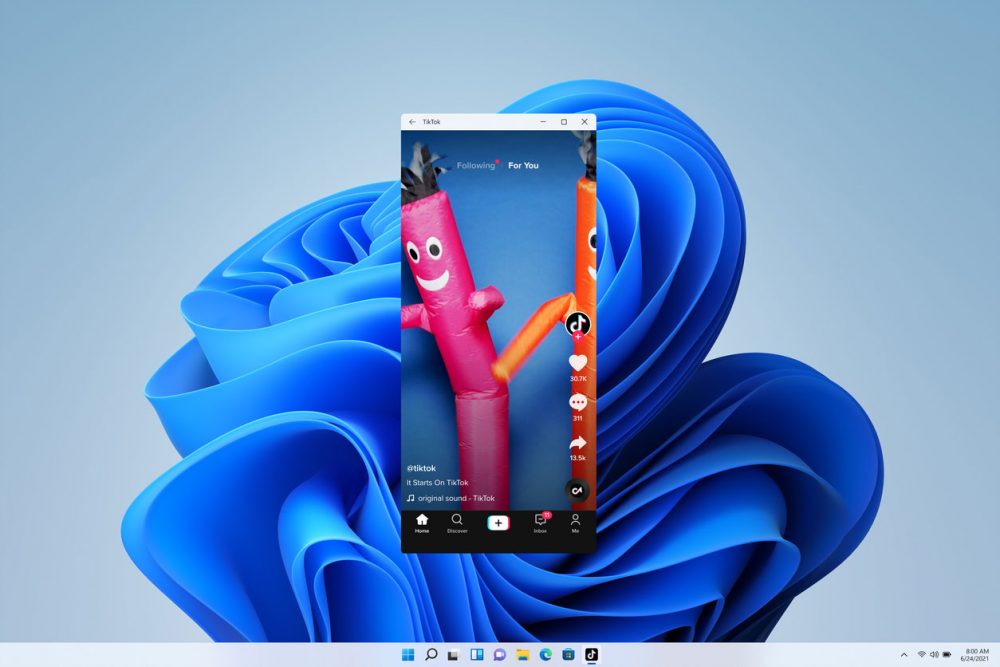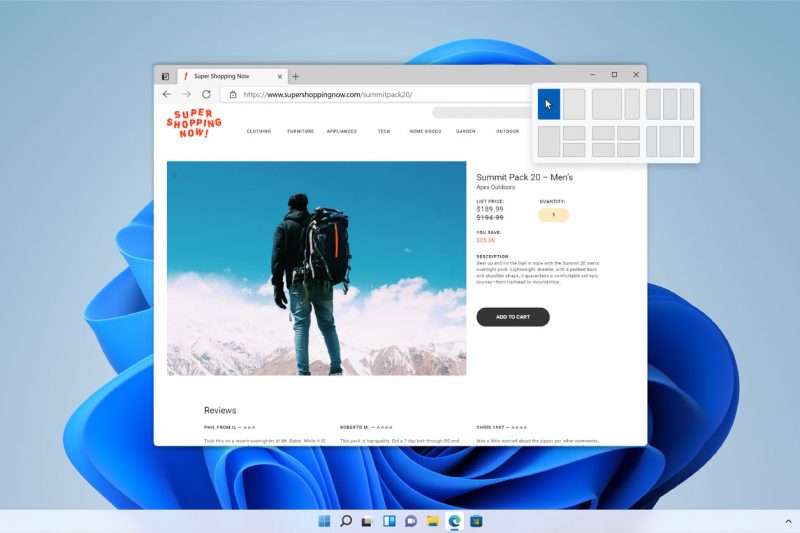
Development
At the 2015 Ignite conference, Microsoft employee Jerry Nixon stated that Windows 10 would be the "last version of Windows", a statement that Microsoft confirmed was "reflective" of its view. The operating system was considered to be a service, with new builds and updates to be released over time. However, speculation of a new version or a redesign of Windows arose in January 2021, after a job listing referring to a "sweeping visual rejuvenation of Windows" was posted by Microsoft. A visual refresh for Windows, developed under the codename "Sun Valley", was reportedly set to re-design the system's user interface.
Announcement
At the Microsoft Build 2021 developer conference, CEO and chairman Satya Nadella teased the existence of the next generation of Windows during his keynote speech. According to Nadella, he had been self-hosting it for several months. He also teased that an official announcement would come very soon. Just a week after Nadella's keynote, Microsoft started sending invitations for a dedicated Windows media event at 11 am ET on June 24, 2021. Microsoft also posted an 11-minute video of Windows start-up sounds to YouTube on June 10, 2021, with many people speculating both the time of the Microsoft event and the duration of the Windows start-up sound video to be a reference to the name of the operating system as Windows 11.
On June 24, 2021, Windows 11 was officially announced at a virtual event hosted by Chief Product Officer Panos Panay. According to Nadella, Windows 11 is "a re-imagining of the operating system". Further details for developers such as updates to the Microsoft Store, the new Windows App SDK (code-named "Project Reunion"), new Fluent Design guidelines, and more were discussed during another developer-focused event on the same day.
Release
The Windows 11 name was accidentally released in an official Microsoft support document in June 2021. Leaked images of a purported beta build of Windows 11's desktop surfaced online later on June 15, 2021, which were followed by a leak of the aforementioned build on the same day. The screenshots and leaked build show an interface resembling that of the canceled Windows 10X, alongside a redesigned out-of-box experience (OOBE) and Windows 11 branding. Microsoft would later confirm the authenticity of the leaked beta, with Panay stating that it was an "early weird build".
At the June 24 media event, Microsoft also announced that Windows 11 would be released in "Holiday 2021", with an exact date not given. Its release will be accompanied by a free upgrade for compatible Windows 10 devices through Windows Update. On June 28, Microsoft announced the release of the first preview build and SDK of Windows 11 to Windows Insiders.
On August 31, 2021, Microsoft announced that Windows 11 is slated for release on October 5, 2021. The release would be phased, with newer eligible devices to be offered the upgrade first. Microsoft expects the roll-out to be finished by mid-2022. Since its predecessor Windows 10 was released on July 29, 2015, more than six years earlier, this is the longest time span between successive releases of Microsoft Windows operating systems, beating the time between Windows XP (released on October 25, 2001) and Windows Vista (released on January 30, 2007).
Features
Windows 11, the first major Windows release since 2015, builds upon its predecessor by revamping the user interface to follow Microsoft's new Fluent Design guidelines. The redesign, which focuses on ease of use and flexibility, comes alongside new productivity and social features and updates to security and accessibility, addressing some of the deficiencies of Windows 10.
The Microsoft Store, which serves as a unified storefront for apps and other content, is also redesigned in Windows 11. Microsoft now allows developers to distribute Win32, progressive web applications, and other packaging technologies in the Microsoft Store, alongside the standard Universal Windows Platform apps.
The collaboration platform Microsoft Teams is integrated into the Windows 11 user interface and is accessible via the taskbar. Skype will no longer be bundled with the OS by default.
Microsoft promoted performance improvements such as smaller update sizes, faster web browsing in "any browser", faster wake time from sleep mode, and faster Windows Hello authentication.
Windows 11 will ship with the Chromium-based Microsoft Edge web browser, and will not include or support Internet Explorer. Windows 11 will become the first version of Windows to ship without Internet Explorer since the original retail release of Windows 95 (Internet Explorer was first bundled with the OSR1 release).
The updated Xbox app is bundled with Windows 11. The Auto HDR and DirectStorage technologies introduced by the Xbox Series X and Series S will be integrated into Windows 11; the latter requires a graphics card supporting DirectX 12, and an NVMe solid-state drive.
User interface
A redesigned interface is present throughout the operating system; translucency, shadows, a new color palette, and rounded geometry are prevalent throughout the UI. Taskbar buttons are center-aligned by default, and the new "Widgets" button displays a panel with widgets along with a news feed powered by Microsoft News (expanding upon the "news and interests" panel introduced in later builds of Windows 10). The taskbar is permanently pinned to the bottom edge of the screen and cannot be moved to the top, left, or right edges of the screen in Windows 11 (although the centered icons could be toggled to align to the left).
The Start menu has been significantly redesigned, replacing the "live tiles" used by Windows 8. x and 10 with a grid of "pinned" applications, and a list of recent applications and documents.
Task View, a feature introduced in Windows 10, features a refreshed design and supports giving separate wallpapers to each virtual desktop. The window snapping functionality has been enhanced with two additional features; "snap layouts" allow the user to select a pre-determined layout they want to use for tiling multiple windows onto a display. The tiled arrangement of windows can be minimized and restored from the taskbar as a "snap group".
Windows 11 features a new font, Segoe UI Variable. The font is designed to scale better with monitors with a higher amount of dots per inch, which the old Segoe UI did not account for. Other changes to the system include new system icons, animations, sounds, and widgets. Much of the interface and start menu takes heavy inspiration from the now-canceled Windows 10X. A new design for the File Explorer and Windows Settings apps was also previewed.
Windows Subsystem for Android
While not in the first release, a future release of Windows 11 will allow users to install and run Android apps onto their device using the new Windows Subsystem for Android (WSA) and the Android Open Source Project (AOSP). These apps can be obtained from within the Microsoft Store via the Amazon Appstore. This feature will require a Microsoft account, an Amazon account, and a one-time install for the Windows Amazon Appstore client. Users can also install Android apps through any source using the Android application package (APK) file format.
System security
As part of the minimum system requirements, Windows 11 only runs on devices with a Trusted Platform Module 2.0 security coprocessor. According to Microsoft, the TPM 2.0 coprocessor is a "critical building block" for protection against firmware and hardware attacks. In addition, Microsoft now requires devices with Windows 11 to include virtualization-based security (VBS), hypervisor-protected code integrity (HVCI), and Secure Boot built-in and enabled by default. The operating system also features hardware-enforced stack protection for supported Intel and AMD processors for protection against zero-day exploits.
Like its predecessor, Windows 11 also supports multi-factor authentication and biometric authentication through Windows Hello.
System requirements
| Component | Minimum |
|---|---|
| Processor | A compatible 64-bit processor (x86-64 or ARM64) with at least 1 GHz clock rate and at least 2 cores |
| Memory (RAM) | At least 4 GB |
| Storage space | At least 64 GB |
| System firmware | UEFI |
| Security | Secure Boot, enabled by default |
| Trusted Platform Module (TPM) version 2.0 | |
| Graphics card | Compatible with DirectX 12 or later with WDDM 2.0 driver |
| Display | High definition (720p) display that is greater than 9” diagonally, 8 bits per color channel |
| Internet connection and Microsoft accounts | Internet connection and Microsoft account required to complete the first-time setup on Windows 11 Home. |
| Feature | Requirements |
|---|---|
| 5G support | 5G capable modem |
| Auto HDR | HDR-capable monitor |
| Biometric authentication and Windows Hello | Illuminated infrared camera or fingerprint reader |
| BitLocker to Go | USB flash drive (available in Windows 11 Pro and higher editions) |
| Hyper-V | Second Level Address Translation (SLAT) |
| DirectStorage | NVMe Solid-state drive and a DirectX 12 graphics card with Shader Model 6.0 |
| DirectX 12 Ultimate | Available with supported games and graphics cards |
| Spatial sound | Supporting hardware and software |
| Two-factor authentication | Use of PIN, biometric authentication, or a phone with Wi-Fi or Bluetooth capabilities |
| Speech recognition | Microphone |
| Wi-Fi 6E support | New WLAN IHV hardware and driver, Wi-Fi 6E capable AP/router |
| Windows Projection | Wi-Fi adapter that supports Wi-Fi Direct, WDDM 2.0 |
The basic system requirements of Windows 11 differ significantly from Windows 10. Windows 11 only supports 64-bit systems such as those using an x86-64 or ARM64 processor; IA-32 processors are no longer supported. Thus, Windows 11 is the first consumer version of Windows not to support 32-bit processors and 16-bit software (though Windows Server 2008 R2 was the first version of Windows NT to not support them). The minimum RAM and storage requirements were also increased; Windows 11 now requires at least 4 GB of RAM and 64 GB of storage. S mode is only supported for the Home edition of Windows 11. As of August 2021, the officially supported list of processors includes Intel Core 8th generation and later, AMD Zen+ and later, and Qualcomm Snapdragon 850 and later. The compatibility list also includes the "AF" revisions of Ryzen processors and the Intel Core i7-7820HQ (a 7th generation processor), although the latter is only supported on devices that shipped with DCH-based drivers. Devices with unsupported processors are not blocked from installing or running Windows 11, however, a clean install must be performed as Windows Update will prevent an upgrade from Windows 10. Additionally, Microsoft has stated that devices using unsupported processors may be blocked from installing updates.
Legacy BIOS is no longer supported; a UEFI system with Secure Boot and a TPM 2.0 security coprocessor is now required. The TPM requirement, in particular, has led to confusion as many motherboards do not have TPM support, require a compatible TPM module to be physically installed onto the motherboard, or have a built-in TPM on the CPU firmware or hardware level that is disabled by default which requires changing settings in the computer's UEFI to enable. Original equipment manufacturers can still ship computers without the TPM 2.0 coprocessor upon Microsoft's approval.
Reception
Pre-release
The reception of Windows 11 upon its reveal was positive, with critics praising the new design and product features. However, Microsoft was criticized for creating confusion over the minimum system requirements for Windows 11. The increased system requirements (compared to those of Windows 10) initially published by Microsoft could see as many as 60 percent of existing Windows 10 PCs unable to upgrade to Windows 11. Despite the official requirements, pre-release versions of Windows 11 can be installed on systems with legacy BIOS and without Secure Boot or TPM 2.0 by editing the installation media. This has been seen as evidence that many of the new requirements are being artificially imposed for business reasons and are not genuine technical requirements of Windows 11's functionality. In particular, there has been substantial criticism of the environmental implications of turning millions of older computers, many of which still meet their users' needs but not Windows 11's requirements, into e-waste as Windows 10 is phased out. The Home edition of Windows 11 had also received criticism for its enforced Microsoft account and internet connection requirement, needed for users to complete the first-time setup.



Comments